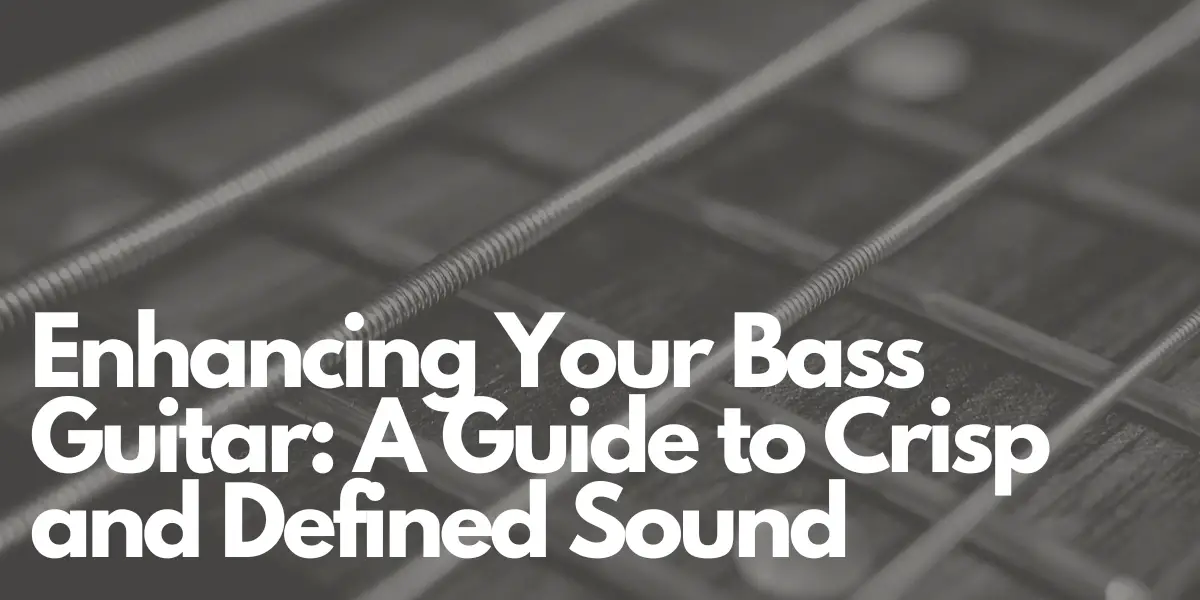Bass guitars are the backbone of many musical pieces, offering depth and rhythm. To create an engaging audio experience, it’s essential for bassists to produce a sound that is both crisp and full. This article will provide you with a detailed guide on how to achieve that perfect bass tone.
Understanding Your Equipment
It all starts with the right gear. Quality instruments and accessories are the foundation of great sound. Make sure your bass guitar, amplifiers, and speakers are of high quality. A well-crafted bass guitar paired with a suitable amplifier can significantly enhance your sound. Similarly, investing in a high-quality subwoofer can ensure accurate bass reproduction. Remember, your equipment should work harmoniously together.
Room Acoustics Matter
The room you play in affects your sound profoundly. Sound waves bounce off surfaces, creating echoes and affecting clarity. To combat this, consider installing bass traps in your room. These can absorb excessive bass and reduce echoes. Additionally, be mindful of where you place your speakers and yourself. Sometimes, moving things around a bit can significantly improve sound quality.
The Art of Speaker Placement
Placing your speakers correctly is crucial for a clear bass line. Your subwoofer, for instance, should ideally be on the floor to enhance low-frequency sounds. Aim for symmetry when positioning your speakers to ensure an even distribution of sound. Small adjustments can sometimes lead to significant improvements in sound quality.
Calibration and Equalization
Modern audio systems often include tools to help you fine-tune your sound. Use room calibration software to adjust your setup to your specific environment. Employ equalization cautiously to enhance bass frequencies without causing distortion. Avoid the temptation to over-boost bass, as this can lead to a muddy sound.
Setting Crossover Frequencies
In a setup with multiple speakers, setting the right crossover frequencies ensures that each speaker plays the part of the spectrum it handles best. This setup leads to a more cohesive and balanced sound, with the bass guitar’s low frequencies feeling integrated rather than separate.
Sound Damping and Isolation
Minimizing unwanted vibrations and resonance is key to a clear sound. Acoustic panels can help reduce echo, while isolation feet under your speakers can prevent vibrations from muddying your bass. These small changes can make a big difference in sound clarity.
Quality Connections
The cables and connectors you use can affect sound quality. High-quality audio cables ensure a clean signal between your guitar, amplifier, and speakers. Investing in good cables can prevent interference and preserve the integrity of your sound.
Avoid Overdriving the Bass
While it might be tempting to turn the bass up as high as it goes, resist this urge. Overdriving can distort your sound and even damage your equipment. Instead, aim for a balanced sound where the bass complements rather than overwhelms.
Perfecting Your Mix
If you’re mixing music, pay close attention to how you integrate the bass. Proper compression can make the bass sound more consistent, while layering different bass tones can add depth and richness.
Regular Maintenance
Keep your equipment in top shape with regular maintenance. Clean your instruments, check cables for damage, and ensure everything is properly connected. Well-maintained equipment can significantly improve your sound quality.
Conclusion
Achieving a crisp and defined bass sound is a blend of art and science. It involves understanding your equipment, room acoustics, and the physics of sound. By following the tips outlined in this guide, you can elevate your bass playing, whether you’re jamming at home, recording in a studio, or performing live. Remember, perfection takes time and experimentation, so be patient and keep tweaking until you find the sound that resonates with you.
Author: Mike P
Hi! My name is Mike! I’ve been an apartment producer/musician for 10+ years. I’ve played in punk bands, released EDM tunes on Beatport and iTunes, and have a semi-successful stock music portfolio. Read more…



